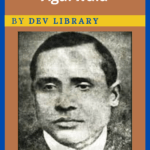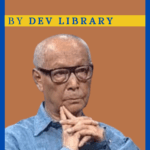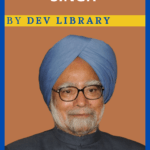Indira Priyadarshini Gandhi was an Indian politician and the first woman prime minister of independent India. She was also a central figure of the Indian National Congress. She was the daughter of Jawaharlal Nehru and one of the central figure of the Nehru family.

Biography of Indira Gandhi
| Name | Indira Gandhi[1] |
| Date of Birth | 19 November 1917 |
| Place of Birth | Anand Bhawan, Allahabad, Uttar Pradesh |
| Father’s Name | Jawaharlal Nehru |
| Mother’s Name | Kamala Nehru |
| Education | 1/ University of Mumbai 2/ Vishwabharati 3/ Oxford University |
| Awards | 1/ Bharat Ratna Award,1971 2/ Mexican Academy Awards,1972 3/ Sahitya Hindi Award,1976 4/ America’s Mother’s Award,1953 |
| Died | October 31,1984 |
Early Life of Indira Gandhi
Women are a decisive force in socio-economic development and political arena. In one word, women are one of the organizers and driving forces of a nation. Many women have actively participated in parliamentary politics. Indira Gandhi is one of the strong women who has played an important role in Indian national politics and has also shown a way for future generations.
Indira Gandhi is a daughter of the famous Nehru dynasty. She was born on November 19, 1917 in Allahabad, Uttar Pradesh. Her father’s name is Jawaharlal Nehru and her mother’s name is Kamala Nehru. Gandhi was a highly intelligent and deeply self-sacrificing girl from an early age. It may be recalled that Indira Gandhi had come in contact with struggling people including Mahatma Gandhi, Chittaranjan Das, Madan Mohan Malviya from a young age, for which the thoughts of these people influenced Indira Gandhi.
Indira Gandhi’s father Jawaharlal Nehru and grandfather Motilal Nehru were arrested by the British government on 6th, 1921 when Indira Gandhi was very young. She was strengthened by various conflicts at a young age. She also faced challenges in various fields as she was born into a struggling family. Gandhi started her education at home through home tutor due to such problems. Indira Gandhi’s academic life was very diverse. She started her formal education at the Kinder Garden School in Delhi. Later, she studied at Pupils Own School after studying at St. Cecilia’s and St. Mary’s Christian Convent schools in Allahabad. She passed matriculation from Bombay University in 1934. She enrolled in Shantiniketan after passing the matriculation examination. Indira Gandhi also focused on dance, songs and paintings in Shantiniketan, she is not only concerned with bookish education. It may be recalled that Gandhi had studied at Bex’s New School in addition to studying at the International School in Geneva while going abroad for treatment for her mother Kamala Nehru. Indira Gandhi also studied for a few days at Summer Villa School in Oxford after the death of mother Kamala Nehru in 1936. Importantly, Indira Gandhi’s father Jawaharlal Nehru, who led the freedom movement against the British, sent a letter to Indira Gandhi on various issues like world literature- civilization-culture-politics during the prison break. It may be recalled that these letters were no less than the content contained in the text book. Gandhi gained knowledge on various issues from her father’s letter. These letters later given by father Jawaharlal Nehru to Indira Gandhi were also published in the form of book.
Indira Gandhi’s husband’s name was Feroze Gandhi. She got married to Persian youth Feroze Gandhi in 1942. They have two children. Their two children are Sanjay Gandhi and Rajiv Gandhi.
Also Read : Biography of Rajiv Gandhi
Political Career of Indira Gandhi
At the age of 21, in 1938, Indira Gandhi formally joined the Congress and joined the Political Career. It may be recalled that she also actively participated in India’s freedom movement launched against the British. After the passage of the Quit India Resolution in 1942, the government banned all meeting committees in parallel with the detention of many other leaders including Jawaharlal Nehru. But Indira Gandhi called for a meeting to break the government’s ban. In view of which Gandhi and her husband Feroze Gandhi were imprisoned for nearly nine months.
Indira Gandhi’s father Jawaharlal Nehru took over as the first Prime Minister of independent India after India was liberated from British rule on August 15, 1947. Indira Gandhi played an important role as his right hand during the prime ministership of Jawaharlal Nehru. It may be recalled that Gandhi had at that time availed the facility of participating in various domestic and international meeting committees with her father and participated in foreign travel programmes with her father. Indira Gandhi was elected as congress leader in 1959. Importantly, Gandhi was nominated as the executive assistant along with her place in the Indian delegation of the Educational Science and Cultural Organisation (UNESCO) of the United Nations.
Lalbahadur Shastri took over as prime minister after the death of Jawaharlal Nehru in May 1964 and importantly Indira Gandhi took over as minister of information and radio in the Lalbahadur Shastri’s cabinet. Gandhi as a minister was brave, outspoken, self-reliant and visionary. One of the notable features of Indira Gandhi’s personality was friendly behaviour. Direct contact with the people helped establish Gandhi as a privileged leader in a short span of time. Indira Gandhi took over as the Prime Minister of India after the death of Lalbahadur Shastri in 1966. It may be recalled that Indira Gandhi was the first woman to hold the post of Prime Minister.
Indira Gandhi’s political ideal was socialist democracy. It may be recalled that Gandhi won the general elections in 1967 and took over as prime minister again. The noteworthy task she took up after assuming charge as Prime Minister is nationalization of bank. She also took special steps to build a self-reliant India through economic growth. Gandhi also implemented various programmes to implement the poverty problem by the slogan “Garibi Hatao” to eliminate poverty problem from the country. She introduced a drastic change in agriculture through the Green Revolution in a country like India.
Indira Gandhi as prime minister also played an important role in the education sector. She gave special importance towards technical education. She also took special steps to promote the Doordarshan system. She was also interested in the field of sports and cultural.
Indira Gandhi was very clever in terms of policy. She emphasized on establishing good relations with different countries. Gandhi also had a global reputation in the international arena. The long-standing dispute between India and Pakistan ended during Indira Gandhi’s prime ministership and the historic Shimla Agreement was signed in 1972. It may be recalled that during Indira Gandhi’s prime ministership there was a lot of unrest in the country in the wake of which it declared a state of emergency to maintain law and order in the country.
Conclusion
Indira Gandhi, who served as the Prime Minister of India for more than 15 long years with her dream of building a socialist India, died on October 30, 1984. She was killed by two of her Sikh bodyguards, Satwant Singh and Beant Singh, they shot her with their service weapons in the garden of the prime minister’s residence at 1 Safdarjung Road, New Delhi, allegedly in revenge for Operation Blue Star.
FAQ
1/ Who was the first woman to take over as prime minister in independent India?
Answer : Indira Gandhi is the first woman to take over as prime minister in independent India.
2/ What is the name of Indira Gandhi’s father and mother?
Answer: Indira Gandhi’s father’s name is Jawaharlal Nehru and mother’s name is Kamala Nehru.
3/ How did Indira Gandhi died?
Answer: On October 31,1984, two of Gandhi’s Sikh bodyguards, Satwant Singh and Beant Singh, shot her with their service weapons in the garden of the prime minister’s residence at 1 Safdarjung Road, New Delhi, allegedly in revenge for Operation Blue Star.
4/ During whose prime ministership were 14 commercial banks nationalized?
Answer : During Indira Gandhi’s prime ministership, 14 commercial banks were nationalized in 1969.
5/ When was the Shimla Agreement signed?
Answer : The Shimla Agreement was signed in 1972.

Hi, I’m Dev Kirtonia, Founder & CEO of Dev Library. A website that provides all SCERT, NCERT 3 to 12, and BA, B.com, B.Sc, and Computer Science with Post Graduate Notes & Suggestions, Novel, eBooks, Biography, Quotes, Study Materials, and more.








